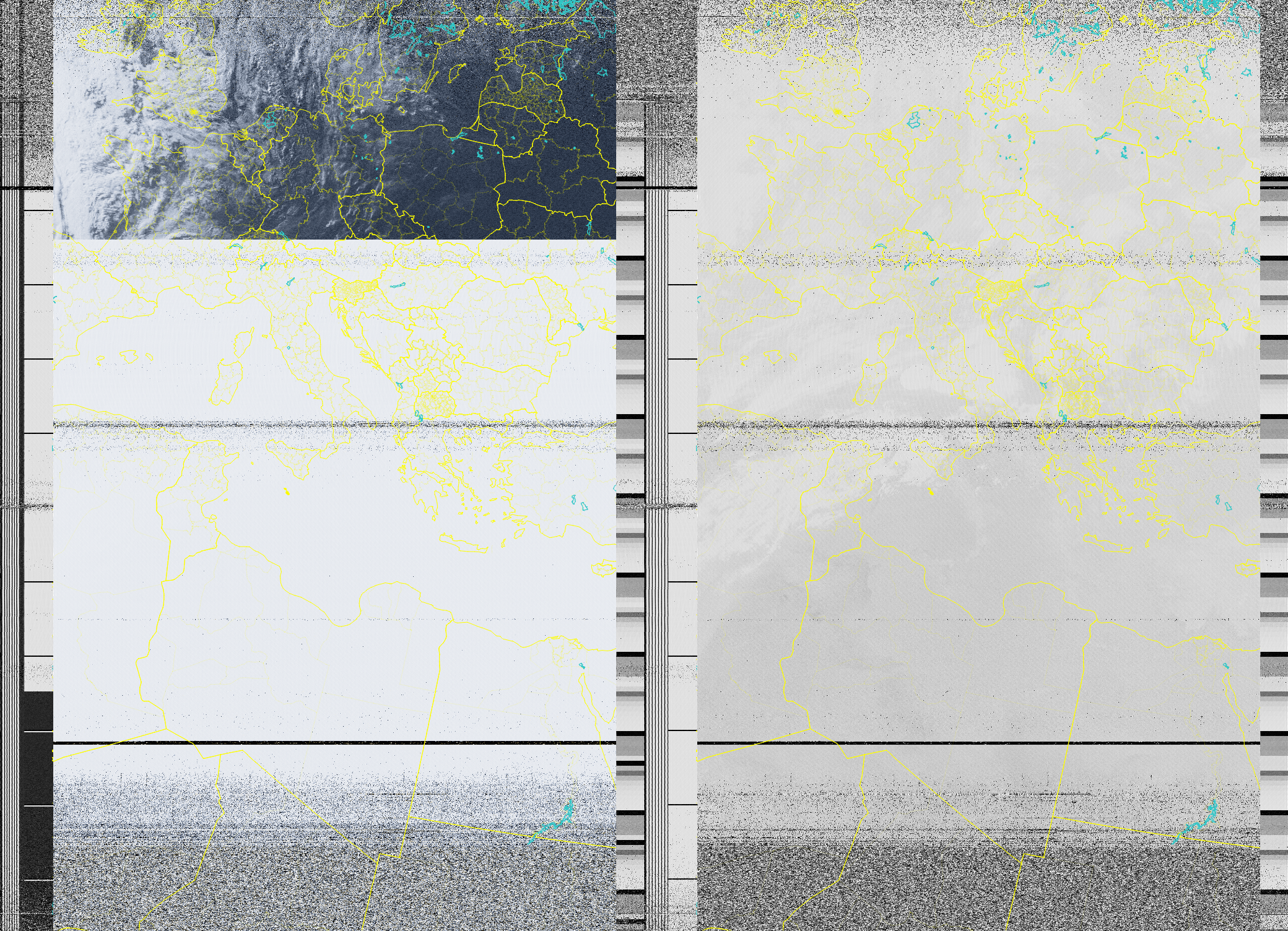Everyone knows helix antenna is needed for capturing NOAA satellite images, due to circular polarization of the signal, right?
As I was listening to ISS APRS repeater (with great success!), I noticed NOAA 19 would pass over me shortly. Since the dipole was already set up outside, I decided to give it a go.
Software used:
- GQRX to capture the audio
- Gpredict to know when to start the recording, and to compensate for the doppler shift
- noaa-apt to convert the audio file to an image
Hardware used:
- RTL-SDR.com branded USB dongle
- 3 lousy USB extension cords
- “Bunny ear” retractable dipole antenna that I got in a bundle with one of the SDRs
Now, there is not much to see in the image, but I sure as hell can spot some clouds there, and that’s much more than I actually expected!
Funny enough, my first NOAA image was using a log periodic TV antenna up on our tower, not at all meant for it but I don’t think it did too badly, still need to try it out using a dipole and see how that does, but I’ve been forgetting to do it and today isn’t that great weather wise. Here’s an image from back in late April from NOAA-18 (iirc)

Another pass, another meh. But this time I got a better view of the sky. What’s interesting is that I got the best image during the end of the transmission, when the direct view of the satellite must’ve been blocked by the house. Can the reflected signal mess with the polarization?

Not really “Meh” if you equalize it:

In noaa-apt choose “Histogram equalization” as contrast adjustment. You’ll get a much better image.
